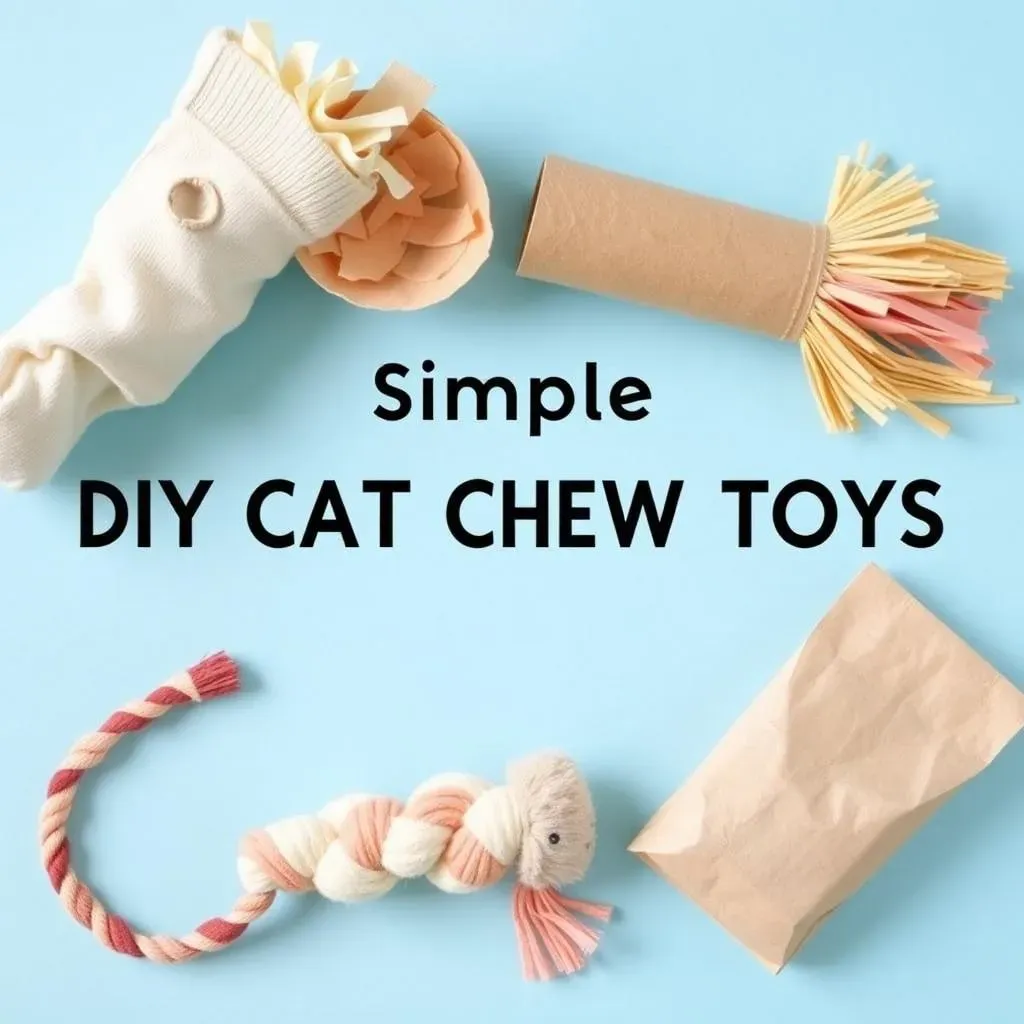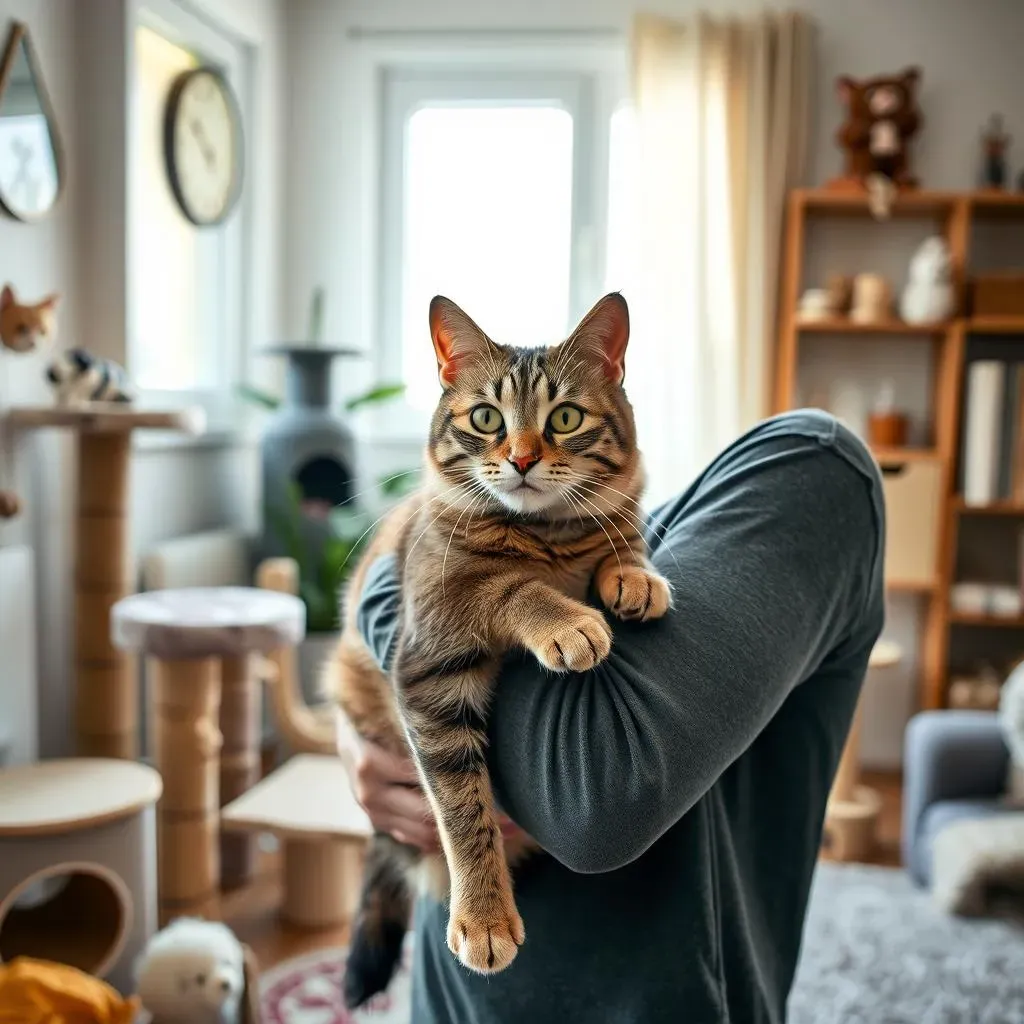Table of Contents
Is your feline friend a little too enthusiastic with their teeth? Maybe your cat is a tiny terror, turning your furniture into their personal chew toy. You're not alone! Many cat owners find themselves searching for safe and engaging ways to satisfy their kitty's chewing instincts, especially when they're teething. Store-bought toys can be pricey, and sometimes, you just don't trust what's in them. That's where the magic of a "homemade chew toy for cats" comes in. This article will guide you through creating simple, safe, and fun chew toys using items you probably already have at home. We'll explore why homemade options are a great choice, provide easy DIY ideas, and cover important safety tips to keep your fur baby happy and healthy. If crafting isn't your thing, we'll also point you towards where you can find safe, high-quality cat toys. So, let's get started and make your cat's chewing time a bit more enjoyable (and less destructive for your furniture!).
Why Homemade Chew Toys Are Great for Cats

Why Homemade Chew Toys Are Great for Cats
Okay, so why should you even bother making a "homemade chew toy for cats" when there are tons of options at the pet store? Well, for starters, it's often way cheaper. Let's be real, those fancy cat toys can cost a small fortune, and they’re often destroyed within minutes. Plus, you have total control over what your cat is putting in their mouth. No mystery ingredients, no questionable materials – just good, safe fun. Many cats have allergies or sensitivities, so you know what’s in it. This is especially crucial for teething kittens who chew on anything and everything. Also, making a toy is a great way to bond with your cat, and trust me, they appreciate the effort, even if they just end up batting it around like a tiny soccer ball.
Simple DIY Homemade Chew Toy Ideas

Simple DIY Homemade Chew Toy Ideas
Alright, let’s get to the fun part: making some toys! When it comes to “simple DIY homemade chew toy ideas,” you don't need to be a craft master. A classic is the sock toy. Just grab an old sock (clean, please!) and stuff it with some crinkled paper or even another smaller sock. Tie off the end and bam—you've got a crinkly, chewy delight. Another super easy idea is a cardboard roll. You know, the ones from paper towels or toilet paper? Flatten one end, fold in the other, and you have a perfect little tube for your cat to bat around and chew on. You can even cut some fringe on the end to make it extra interesting. And if you want to get a little more involved, try a braided fleece toy. Cut some strips of fleece fabric, braid them together, and tie off the ends. It’s soft, it’s chewy, and it’s great for those cats who like to knead and chew.
Here's a quick rundown of materials you likely already have that can be transformed into cat chew toys:
- Old socks
- Cardboard tubes
- Fleece scraps
- Paper bags (remove handles)
- Plastic shower rings
- Toilet Paper roll
Safety Tips for Homemade Cat Chew Toys

Safety Tips for Homemade Cat Chew Toys
Okay, so you're making these awesome homemade chew toys, that's fantastic! But before you unleash your kitty on them, let's talk safety, because a "homemade chew toy for cats" should be fun, not a trip to the vet. First off, always supervise your cat when they're playing with a new toy, especially if it's homemade. You need to make sure they're not tearing it apart and swallowing any small pieces. Avoid using anything with small parts that can be easily chewed off and ingested, like buttons, beads, or plastic eyes. Also, skip anything that could be toxic, like certain types of string or rubber bands. And while we're talking about string, if you do use it, make sure it's super short and tightly secured, so your cat doesn’t get tangled.
Another big thing is to regularly inspect your homemade toys. If they're looking a bit ragged or falling apart, it's time for a replacement. A damaged toy can be a hazard, so don't wait until it's completely destroyed. Also, think about the materials you're using. For instance, if you’re using fabric, make sure it’s a sturdy material that won’t easily fray. And if you're using paper bags, remove the handles, because a cat can easily get stuck in those. A good rule of thumb: if you wouldn’t give it to a toddler, don’t give it to your cat. Ultimately, it's about being mindful and taking a few extra steps to make sure playtime is both fun and safe.
Here is a quick guide of what to avoid:
- Small parts (buttons, beads, plastic eyes)
- Toxic materials (certain strings, rubber bands)
- Long, loose strings
- Damaged or frayed toys
- Paper bags with handles
Where to Find Safe Cat Toys if DIY Isn't Your Thing

Where to Find Safe Cat Toys if DIY Isn't Your Thing
Okay, so maybe you're not the crafty type, or perhaps you just don't have the time to whip up a "homemade chew toy for cats." That's totally fine! There are plenty of places where you can find safe and engaging toys for your feline friend. When you're looking for alternatives, it is important to look for toys that are specifically designed for cats, made from non-toxic materials, and are durable enough to withstand some serious chewing. Think about what your cat likes. Do they love to chase? Look for toys that move or make noise. Are they into biting and scratching? Then go for something they can really sink their teeth into. The goal is to find toys that keep them entertained and safe.
A good starting point is online retailers like Chewy.com. They have a huge selection of cat toys, and you can often read reviews from other cat owners to get an idea of which toys are the most durable and popular. Another good option is your local pet store, but be mindful of brands like Hartz, which sometimes have questionable safety standards. If you are unsure, ask the employee or do some research online to ensure you’re buying quality products. You can also find some great options at smaller, boutique-style pet stores that tend to focus on natural and eco-friendly products, but they may be more expensive. Remember, a bit of research can go a long way in keeping your kitty safe and happy.
Where to Buy | Pros | Cons |
|---|---|---|
Online Retailers (e.g., Chewy) | Large selection, reviews, convenient | Can't see/touch before buying |
Local Pet Stores | Can see/touch, get advice | May have limited selection, brands may vary |
Boutique Pet Stores | Natural/eco-friendly options, high quality | More expensive |
Ultimately, whether you decide to make a "homemade chew toy for cats" or purchase one from a store, the most important thing is to provide your cat with safe and engaging ways to satisfy their natural instincts. Keep an eye on them during playtime, regularly inspect their toys, and replace anything that's damaged or worn out. By doing so, you’ll be ensuring your feline companion has many happy, and safe, playtime sessions!